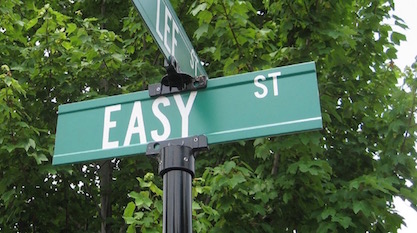 Evolution
Evolution
 Faith & Science
Faith & Science
Claim: New Proteins Evolve Very Easily


As noted here yesterday, a new evolution book, Adam and the Genome, co-authored by theistic evolutionists Dennis Venema and Scot McKnight is influenced by the mythical Warfare Thesis and makes erroneous arguments that the fossils, echolocation, and pseudogenes support evolution. We now move on to another topic: protein evolution.
Proteins are composed of a linear string of amino acids, often hundreds in length, and perform all sorts of important tasks in the cell. They could not have evolved by any stretch of the imagination, and so pose a rather difficult problem for evolutionists. Their new book on evolution attempts to resolve this problem with a claim that has long since been understood to be false. In fact, the claim, properly understood, provides yet more scientific evidence against evolution.
The Problem of Protein Evolution
For evolution to work biology must be chocked full of structures that can arise via long, gradual evolutionary pathways. Mutations must be able to slowly accumulate, gradually improving the structure. In other words, the “fitness landscape” must be smooth and gradual, not rugged or precipitous.
That evolutionary expectation has been found to be false many times, and proteins are no exception. It is now clear that for a given protein, only a few changes to its amino acid sequence can be sustained before the protein function is all but eliminated. Here is how one paper explained it:
The accepted paradigm that proteins can tolerate nearly any amino acid substitution has been replaced by the view that the deleterious effects of mutations, and especially their tendency to undermine the thermodynamic and kinetic stability of protein, is a major constraint on protein evolvability—the ability of proteins to acquire changes in sequence and function.
In other words, protein function precipitously drops off with only a tiny fraction of its amino acids altered. It is not a gradual fitness landscape. Another paper described the protein fitness landscape as rugged.
Therefore it is not surprising that various studies on evolving proteins have failed to show a viable mechanism. One study concluded that 10^63 attempts would be required to evolve a relatively short protein. And a similar result (10^65 attempts required) was obtained by comparing protein sequences. Another study found that 10^64 to 10^77 attempts are required, and another study concluded that 10^70 attempts would be required.
So something like 10^70 attempts are required yet evolutionists estimate that only 10^43 attempts are possible. In other words, there is a shortfall of 27 orders of magnitude.
But it gets worse. The estimate that 10^43 attempts are possible is utterly unrealistic. For it assumes billions of years are available, and that for that entire time the Earth is covered with bacteria, constantly churning out mutations and new protein experiments. Aside from the fact that these assumptions are entirely unrealistic, the estimate also suffers from the rather inconvenient fact that those bacteria are, err, full of proteins. In other word, for evolution to evolve proteins, they must already exist in the first place.
This is absurd. And yet, even with these overly optimistic assumptions, evolution falls short by 27 orders of magnitude.
The numbers don’t add up. Proteins reveal scientific problems for evolution. What is interesting is how evolutionists react to these problems.
The “Solution” to Protein Evolution
A common solution cited by evolutionists for the problem of protein evolution is the case of nylonases — enzymes that rapidly arose in bacteria, in the last century, and are able to breakdown byproducts of the nylon manufacturing process. The idea here is that these byproducts of the nylon manufacturing process were present in the bacteria’s environment for the first time. The bacteria had never been exposed to such chemicals, and yet in an evolutionary blink of an eye, were able to produce proteins to metabolize the new chemicals. Does this not demonstrate that the chance origin of a protein-coding genes is not a problem? Proteins could have evolved with no problem, after all, we just witnessed it occur with the origin of nylonases. As the new book explains, protein evolution “appears to be trivial for evolution to achieve.”
Unfortunately this icon of evolution is an enormous misrepresentation of the science.
The Science
The evolutionary claim that the nylonases demonstrate how easy protein evolution is non-scientific for several reasons. Indicators of this include that fact that the nylonases evolved so rapidly — in an entirely unrealistic time frame under evolution, and that they arose in bacteria with thousands of preexisting proteins. Again, this evolutionary claim of how proteins evolve is circular, it requires the preexistence of proteins.
None of this is feasible given the problems of protein evolution discussed above. The scientific inference would be that the bacteria developed the nylonases because those chemicals they metabolize were present in the environment. In other words, directed adaptation.
Indeed, this is precisely what researchers in the field have concluded. They hypothesize that the new metabolism capability is a stress response, an adaptation to a challenging environment. In other words, the environment influenced the adaptation. This is not a case of evolutionary change. The nylonase enzymes did not arise from a random search over sequence space until the right enzymes were luckily found and could be selected for. That would have required eons of time, and is far beyond evolution’s capability, as we have seen. Instead, cellular structures rapidly formed new enzymes, due to the environmental change.
Indeed, such adaptation to nylon manufacture byproducts has been repeated in laboratory experiments. In a matter of months bacteria acquire the ability to digest the unforeseen chemical. Researchers speculate that mechanisms responding to environmental stress are involved in inducing adaptive mutations.
This does not demonstrate protein evolution. In fact it refutes evolution. Evolution does not have the resources to have created directed adaptation mechanisms. And even if it did, such mechanisms would not have been selected for because they provide no immediate fitness improvement.
This is not evidence that protein-coding genes can evolve by chance. A new gene, arising within a modern cell responding to an environmental challenge, is not analogous to chance origin. Unfortunately evolutionists have a long history of inappropriately claiming otherwise (for example, see here and here).
We have seen that this new evolution book makes erroneous arguments that the fossils, echolocation, and pseudogenes support evolution. We now see another erroneous argument for protein evolution.
All these arguments and evidences are typical. They are icons of evolution, and it is astonishing how durable they are in the evolution literature given their complete failure.
If evolution was indicated by the science I would be the first to sign up. But in fact it is an age-old religious idea that makes no sense on the science. And likewise this new book is an utter disaster. The confection immediately crumbles under even a little probing.
Photo credit: Jeremy Mikkola, via Flickr.
Cross-posted at Darwin’s God.
